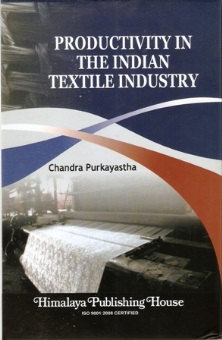India’s textile industry is comprised mostly of small-scale, nonintegrated spinning, weaving, finishing, and apparel-making enterprises The objectives of the study was to consider the changes in the Indian textile industry; productivity changes and policies to improve it. Productivity leads to competitiveness, which in turn is a function of factors related to cost of products, as well as non-price factors. Productivity improvement and sound policies go a long way in enhancing the competitiveness of an industry.
The thesis has discussed the three phenomena respectively technical change, technical efficiency change and scale efficiency change, which constitute independent factors of productivity change. The approach that has been adopted for the study is the Mathematical Programming Approach or the Data Envelopment Approach (DEA). Thus, an assessment is made of the inefficiency of a firm relative to a sample of firms. This is then compared to a hypothetical production frontier derived theoretically. Inefficiency is the distance of a firm’s output/input mix from this frontier. The advantage of this method is that it is non-parametric, deterministic method.
Data Envelopment Analysis (DEA) is a mathematical programming approach to assessing the inefficiency of a firm (plant) relative to a sample of firms (plants). In essence, the approach maps out a hypothetical production frontier on the basis of all the output and input information from the sample. Inefficiency is then assessed by the ‘distance’ a firm’s specific output/input mix is from the frontier. The most important advantage of DEA over traditional econometric frontier studies is that it is a non-parametric, deterministic method and therefore does not require a priori assumptions about the analytical form of the production function. Therefore, the probability of a misspecification of the production technology is zero.
The study concludes that the average total factor productivity growth was around 7.3% to 8.2%. Most of this change was due to technological change of around 6.4% to 7.2%. Pure technical change accounted for hardly 0.4%. Scale efficiency change was less than 1%. Some policy suggestions regarding scale economies, labour changes including skill deficit, reservations to small sector, etc. completes the study.
Contents –
1. The Textile Industry
2. Overview of Productivity Measures
3. Data Envelopment Analysis
4. Technical Efficiency and Total Factor Productivity Analysis in the Textile Industry in India
Appendix IV
Conclusion
Policy Suggestions
Bibliography







